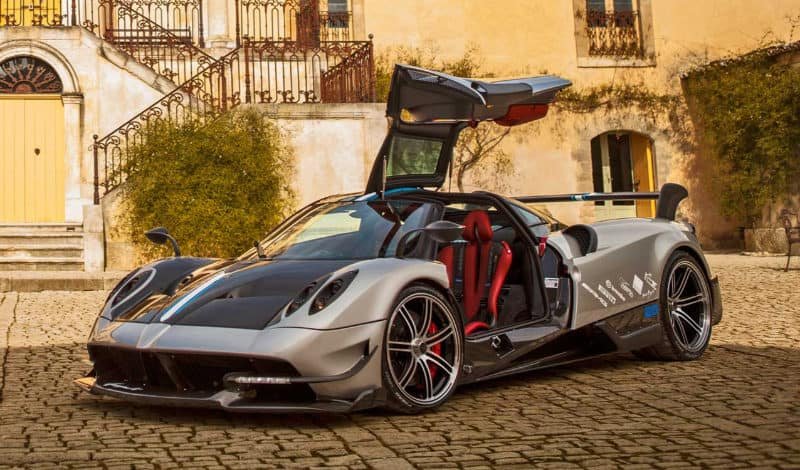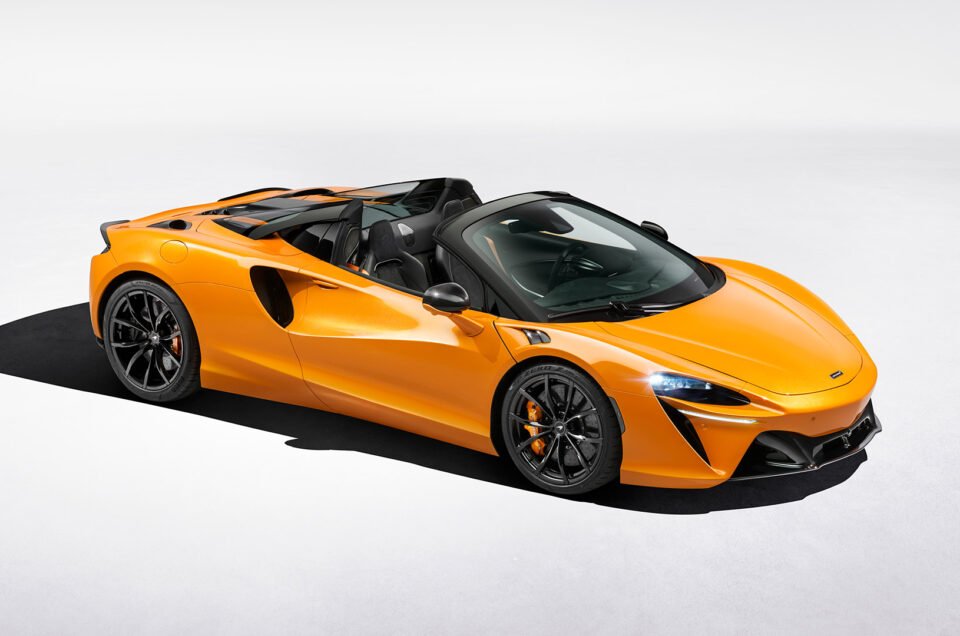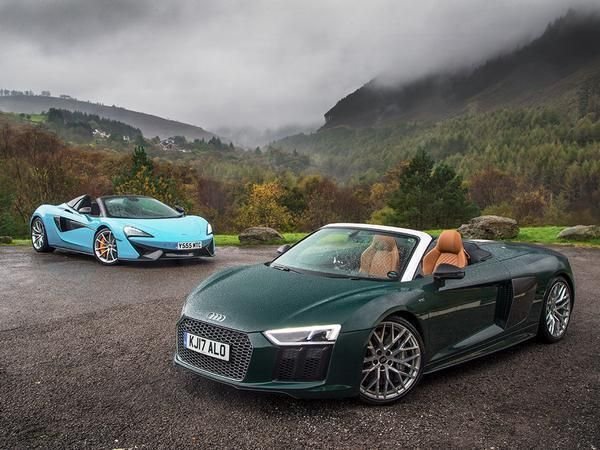Introduction to Maserati and McLaren
In the intricate tapestry of the automotive industry, Maserati and McLaren stand as two distinguished symbols of luxury, performance, and innovation. These brands, though sharing a common commitment to excellence, boast unique origins and histories that have shaped their respective journeys. Understanding these backgrounds is essential to fully appreciate the fervent debate over which marque outshines the other.
Founded in 1914 in Bologna, Italy, Maserati was brought to life by the Maserati brothers, whose unrelenting passion for engineering set the stage for the brand’s illustrious future. Maserati initially focused on building race cars, marking its presence in early motorsport history with victories and notable performances. The transition to luxury road cars solidified Maserati’s reputation for marrying opulence with performance, a tradition carried through iconic models like the Quattroporte and GranTurismo. Over the decades, the brand has continually evolved, embracing modern technologies while retaining its classic allure, a testament to its enduring legacy.
On the other hand, McLaren’s journey started in 1963 when New Zealander Bruce McLaren founded McLaren Racing Limited. The brand’s foundation is deeply entrenched in motorsport, particularly Formula 1, where it has amassed an enviable record of achievements, including multiple Constructors’ and Drivers’ Championships. The leap from the racetrack to producing luxury sports cars came with the advent of the McLaren F1 in the 1990s, a vehicle that set new benchmarks for performance. Today, McLaren’s lineup, featuring models like the 720S and the hybrid Artura, exemplifies the brand’s relentless pursuit of automotive perfection driven by innovative engineering.
Although Maserati and McLaren originate from different corners of the world and harbor distinct philosophies, both produce vehicles that are not merely modes of transportation but statements of artistry and engineering prowess. This foundation sets the stage for a comprehensive analysis of their strengths and weaknesses, guiding discerning enthusiasts and potential buyers in making an informed decision.
“`html
Performance and Engineering
The comparison of performance metrics between Maserati and McLaren is a fascinating endeavor, as both brands represent pinnacle achievements in automotive engineering. Maserati’s approach to performance is historically rooted in crafting automobiles that offer a perfect balance between power and sophistication. The engines often range from V6 to V8 configurations, delivering robust horsepower between 350 and 580. Their acceleration is noteworthy, with the Maserati Quattroporte, for example, sprinting from 0 to 60 mph in around 4.2 seconds. Maserati vehicles also frequently push top speeds that exceed 170 mph, demonstrating their capacity to excite even the most discerning enthusiasts.
Conversely, McLaren’s dedication to performance is unmistakably linked to their roots in Formula 1 racing. The brand prides itself on lightweight construction using carbon fiber monocoques, which significantly enhances handling capabilities. McLaren models like the 720S can accelerate from 0 to 60 mph in a staggering 2.8 seconds, thanks to their twin-turbocharged V8 engines, which can produce up to 710 horsepower. Moreover, their top speeds often reach well beyond 200 mph, solidifying McLaren’s reputation for sheer, unbridled speed.
When it comes to handling, both brands showcase unique strengths. Maserati’s emphasis on luxury driving experiences does not compromise their vehicles’ agility. The Skyhook suspension system, for instance, continually adapts to driving conditions, ensuring a smooth yet responsive ride. McLaren, on the other hand, employs a proactive chassis control system that offers exceptional stability and cornering precision, essential for a race-track performance replicated for road use.
Technological innovation is a cornerstone for both brands in their quest for performance enhancements. Maserati integrates advanced driver assistance systems and infotainment technologies to augment the driving experience without detracting from its dynamics. McLaren advances this with cutting-edge aerodynamics and active suspension technologies, derived directly from their motorsport endeavors, ensuring even the slightest performance edge is meticulously pursued.
“`
Design and Aesthetics
Maserati and McLaren represent two distinct philosophies in automotive design, each with its own emphasis on luxury, performance, and visual appeal. Maserati, known for its Italian heritage and deeply rooted tradition, integrates a harmonious blend of elegance and sportiness. The exterior styling of Maserati vehicles, characterized by their smooth, flowing lines, and distinctive grilles, exudes a sophisticated yet dynamic presence. Elements like the trident logo and the unique front fascia reflect Maserati’s dedication to an aesthetic that combines timeless luxury with aggressive sportiness.
On the other hand, McLaren, a brand synonymous with cutting-edge performance and innovation, adopts a design ethos that is unapologetically performance-driven. The exterior of McLaren cars often features sharp, aerodynamic contours and an overall aggressive stance designed to maximize speed and precision. McLaren’s use of advanced materials such as carbon fiber not only enhances structural integrity but also contributes to a sleek and futuristic appearance. The bold lines and functional aerodynamics underscore the brand’s commitment to pushing the boundaries of automotive design.
When it comes to interior craftsmanship, Maserati’s cabins are a showcase of Italian artisanship, offering luxurious materials like premium leather, fine wood, and hand-crafted details. The interiors are designed to provide an opulent and comfortable environment, catering to clients who prioritize luxury and refinement. Maserati ensures that every detail, from the stitching of the seats to the layout of the controls, reflects their dedication to creating a luxurious driving experience.
In contrast, McLaren’s interiors prioritize a minimalist yet high-tech ambiance. The use of lightweight, high-performance materials like Alcantara and carbon fiber, along with a more simplistic and driver-focused layout, highlights the brand’s emphasis on enhancing driving dynamics and performance. Even in its interiors, McLaren maintains a balance between functionality and high-end appeal, reflecting its identity as a manufacturer of elite sports cars.
Ultimately, the design and aesthetics of Maserati and McLaren cater to different demographics and preferences. Maserati’s allure lies in its ability to blend luxury with sporty elegance, resonating with clients who seek a grand touring experience. McLaren, however, appeals to enthusiasts who value cutting-edge performance and a more aggressive, race-inspired design. Both brands capture their unique heritage and align their aesthetic philosophies with their target audience, offering distinct yet truly remarkable designs in the automotive world.
Build Quality and Reliability
When comparing Maserati and McLaren cars in terms of build quality and reliability, several key factors come into play, including the durability of materials, common issues reported by owners, and the brands’ reputations for long-term reliability. Maserati, known for its luxurious Italian craftsmanship, frequently garners praise for its use of premium materials and attention to detail in interior and exterior design. However, Maserati has occasionally faced criticisms regarding electronic issues and the overall reliability of its mechanical components over extended periods.
On the other hand, McLaren, a marque synonymous with British engineering excellence and performance, is celebrated for its meticulous construction and high-quality materials tailored for both comfort and speed. The carbon-fiber chassis used in many McLaren vehicles is a standout feature, known for reducing weight while enhancing structural rigidity. McLaren’s innovation often ensures fewer common mechanical issues compared to Maserati, yet the brand has occasionally faced scrutiny regarding the reliability of its complex electronic systems, somewhat similar to Maserati.
When considering the reputations for long-term reliability, McLaren generally enjoys a stronger reputation compared to Maserati. Reliability ratings and owner reports tend to favor McLaren, with fewer recurring issues documented over the lifespan of the vehicles. Both brands, however, offer comprehensive warranty packages to reassure buyers. Maserati typically offers a four-year/50,000-mile warranty, while McLaren provides a similar three-year/unlimited-mileage warranty, reflecting confidence in their engineering though slightly differing in coverage specifics.
Service support is another crucial aspect of reliability. Maserati’s global service network is relatively more extensive, making it convenient for owners worldwide to access authorized service centers. McLaren, while having a more niche market, offers dedicated service support with highly specialized technicians to address the unique needs of their high-performance vehicles.
Overall, while both Maserati and McLaren prioritize build quality and reliability, McLaren tends to edge out slightly in long-term dependability, bolstered by its innovative engineering and robust service support network.
Driving Experience
When it comes to the driving experience, both Maserati and McLaren bring unique qualities to the table, each catering to distinct preferences. Maserati’s offerings are often celebrated for their comfortable, luxurious ride combined with remarkable performance. Drivers commonly praise the plush interior settings, smooth handling, and sophisticated ambiance that Maserati vehicles exude. The ergonomic design of the cockpit, along with its meticulously handcrafted elements, ensures that every journey feels affluent and serene.
On the other hand, McLaren focuses extensively on delivering an adrenaline-pumping, race-inspired experience. The brand’s rich motorsport heritage is evident in the sharp, precise handling and outstanding road feedback that McLaren cars offer. Every detail, from the aerodynamic design to the cutting-edge suspension system, is crafted to amplify driving dynamics. Professional drivers often commend McLaren for its responsive steering and the car’s undeniable connection to the road, making it an ideal choice for those seeking the thrill of performance driving.
Testimonials from professional drivers highlight McLaren’s prowess in track settings. For instance, renowned test driver Jenson Button notes the unmatched control and speed of McLaren supercars, describing the driving experience as “pure exhilaration.” Meanwhile, everyday users of Maserati vehicles frequently mention the brand’s emphasis on luxury and ease of drive. Jane Smith, a Maserati owner, appreciates how her vehicle “glides seamlessly on city roads,” providing both comfort and confidence during long drives.
The differences in driving dynamics between Maserati and McLaren are evident and significant. Maserati tends to be favored by those who prioritize comfort, elegance, and a balanced driving feel. Conversely, McLaren attracts enthusiasts who are passionate about performance, agility, and a more visceral driving experience. Whether you value the refinement of Maserati or the spirited performance of McLaren, the choice ultimately boils down to what aspect of the driving experience you cherish most.
Innovation and Technology
Both Maserati and McLaren are at the forefront of automotive innovation, each bringing unique cutting-edge technology to their vehicles. Maserati has been integrating high-performance technology with Italian craftsmanship. The brand has recently rolled out its proprietary Maserati Intelligent Assistant (MIA) system, which enhances the infotainment experience, featuring advanced connectivity options and an intuitive user interface. Their CoDrive system offers a suite of driver-assistance features, including adaptive cruise control and lane-keeping assistance, ensuring both safety and a superior driving experience.
On the other hand, McLaren focuses heavily on advanced materials and engineering. Their use of carbon fiber monocoque chassis technologies significantly reduces weight while increasing structural rigidity and safety. McLaren’s Proactive Chassis Control, an active suspension system, dynamically adjusts the vehicle’s suspension based on real-time driving conditions. This offers drivers unparalleled handling and comfort, setting a benchmark in automotive excellence.
As the auto industry pivots towards sustainable and electric vehicles, both Maserati and McLaren are not lagging behind. Maserati has committed to producing fully electric models under their ‘Folgore’ line by 2025, integrating advanced electric powertrains to maintain their high-performance legacy while reducing environmental impact. Their approach to sustainability includes the use of recyclable materials and efforts to minimize the carbon footprint throughout their manufacturing processes.
Similarly, McLaren is expanding its hybrid range with the introduction of models like the Artura, embedding electric motor technology to boost performance and efficiency. They are also investing in advanced battery technologies and lightweight materials to push the envelope of electric vehicle performance.
In conclusion, both Maserati and McLaren are leaders in innovation, each pushing the boundaries of what is technologically possible in their vehicles. Whether it is through proprietary systems, advanced materials, or a strong commitment to electric and sustainable vehicle technologies, both brands are setting high standards in the automotive world.
Market Position and Target Audience
Maserati and McLaren occupy distinct niches within the luxury automotive market, each compelling in its unique way. Maserati, with its Italian heritage, positions itself as a blend of luxury and performance. Its pricing strategy caters to affluent buyers who seek a more refined vehicle accompanied by an evocative design and a prestigious brand name. Maserati’s market positioning leans towards a broader spectrum within the luxury segment, appealing to both performance enthusiasts and those desiring a comfortable, opulent driving experience.
On the other hand, McLaren targets a more exclusive and performance-focused audience. Known for its British engineering excellence and racing pedigree, McLaren’s pricing strategy places it in the ultra-high-end tier of the market. This brand primarily attracts aficionados of high-performance supercars, individuals who value cutting-edge technology and superior driving dynamics above all. McLaren’s focus on bespoke customization options further elevates its appeal to discerning buyers seeking peerless exclusivity and performance.
Understanding their different market positions allows insight into their respective value propositions. Maserati communicates its value through a combination of luxury, tradition, and versatility. The brand’s marketing campaigns often highlight its storied past and eye-catching design, invoking a sense of heritage and prestige. Maserati’s messaging frequently emphasizes comfort, making it appealing to those who seek luxury without compromising everyday usability.
Conversely, McLaren’s value proposition hinges on unmatched performance and technological innovation. The brand leverages its Formula 1 success to bolster its reputation for speed and precision. Marketing efforts for McLaren often showcase the latest advancements in automotive engineering and aerodynamics, accentuating the thrill of driving a high-caliber supercar. By doing so, McLaren appeals to a niche audience of performance purists who crave the exhilaration of motorsport-inspired vehicles.
Which is Better?
The intricate discussion comparing Maserati and McLaren has underscored distinct aspects of each brand, catering to varying preferences and requirements of automotive enthusiasts. Both manufacturers command respect in the luxury automobile sector, albeit for different reasons, each appealing to a unique segment of the market.
Firstly, McLaren, renowned for its unparalleled performance and cutting-edge technology, has consistently pushed the boundaries of what a supercar can achieve. Their exceptional engineering provides a race-track experience on the road, making it the preferred choice for thrill-seekers and performance purists. The precise handling, blistering acceleration, and advanced aerodynamics of a McLaren align perfectly with those prioritizing performance and innovation.
Conversely, Maserati presents a different yet equally compelling proposition. Known for its blend of luxury, comfort, and timeless Italian design, Maserati appeals to those who value an exquisite driving experience intertwined with elegance and sophistication. The brand’s storied heritage and attention to detail ensure that each Maserati offers a distinct charm and a sense of exclusivity. This makes it an ideal choice for individuals who appreciate a balance of refined aesthetics and engaging driving dynamics.
When choosing between Maserati and McLaren, one’s decision will heavily depend on personal preferences and priorities. If the priority is sheer speed, technological prowess, and dynamic performance, McLaren stands out as the superior option. However, if the quest is for a car that offers luxurious comfort, distinctive style, and a rich heritage, Maserati certainly fulfills these desires.
Ultimately, both brands offer exceptional vehicles that stand at the pinnacle of their categories. The decisive factor lies in what the individual values more, whether it be the raw, exhilarating performance characteristic of McLaren or the understated elegance and comfort provided by Maserati. Each brand, in its own right, could be deemed “better” depending on the specific needs and desires of the discerning car enthusiast.







